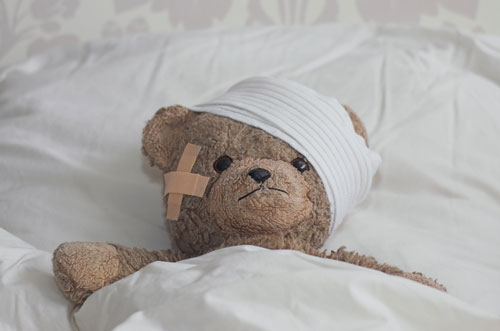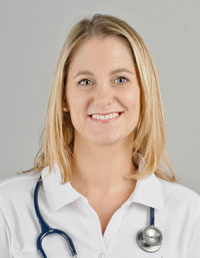
(c) copyright HealthFirst 2015
By Dr Penny Fraser, HealthFirst
“Coughs and Sneezes Spread Diseases”, Ministry of Health, Great Britain 1942:
What you need to know about the flu.
As the mornings are getting mistier and the kids start swapping coughs and colds at school, our thoughts may already be turning to the winter flu season – and how to avoid it.
We use the word ‘flu’ quite freely when someone has ‘just’ a cough, bad cold or fever but actually true influenza, an infection with the influenza virus A, B or C is quite a different affliction. Influenza, the ‘flu’, la grippe, die Grippe, Spanish fever – whatever you call it in your home, it is an illness that needs to be taken seriously.
It is said that the way you can tell the difference between a common cold or influenza is this: You are looking out of the window from your sick bed and see a 100CHF note lying on the grass. If you have true influenza, you just can’t get out of bed to get it!
This is a humorous way of explaining how severe the symptoms of influenza can be. From a more medical point of view, the characteristics are:
- Sudden onset of high fever (above 38°C) often with shivering/shaking
- Feeling very unwell and fatigued
- Joint and muscle pain
- Cough – usually dry and can be severe
- Headache
- Sore throat
- Runny and/or stuffy nose
- Red, watering eyes
- Possible diarrhoea and abdominal pain, particularly in children
Most people have a miserable 7 days with these symptoms whilst resting, drinking plenty of water and taking simple painkillers. However, the virus can cause a more severe illness, and even death, in certain high risks groups in our community. Rare complications of influenza include pneumonia, ear infections, meningitis and infection of the heart muscle.
In fact, influenza has had a dark history over the centuries. The Spanish Flu pandemic in 1918, for example, was due to a particularly dangerous strain of the virus that infected 500 million people around the world. It sadly resulted in the deaths of 50-100 million (3-5% of the world’s population at the time). This is an impossible number to imagine but perhaps compare it to the death toll of the concurrent World War I, which was 37 million.
Sadly, influenza is still a worry for us living here in Switzerland in 2015. According to the Federal Office of Statistics, last winter there was a jump of 17% in the number of people who died from the complications of influenza compared to other years. 2200 people died, most of who were over 65 years of age but there were also a significant number of young children and pregnant women.
This all seems very alarming but the good news is that there are some simple, effective measures that we can all take to protect ourselves as well as the more vulnerable members of our family and friends:
- Cover your mouth and nose with a tissue when you cough or sneeze - if not the virus can spray into the air at speeds of up to 200 km/hour! No tissue? Sneeze or cough into the crook of your elbow.
- Avoid touching your eyes, mouth and nose as this may bring the virus right to the places where it can easily invade the body.
- Wash your hands regularly. The flu virus is killed dead by humble soap. Alcohol hand rub is excellent when soap and water are not available.
- Clean surfaces at home, school and work that are touched by many people – think door handles, telephones receivers, kitchen worktops etc.
- Avoid close contact with poorly people if you can – text or call to see how they are instead.
- If you get sick, stay home! Don’t be brave and struggle to work, do the shopping, and take the kids to school. Someone with influenza is contagious one day before they show symptoms and then for the next 5-7 days, maybe longer. Be selfless and stay away.
- Get vaccinated….
Who should get vaccinated?
There are three main groups of people who should be vaccinated for different reasons:
- Those who are at high risk of getting very ill or dying from influenza. These include people over 65, pregnant women and those with a newborn baby, premature babies for the first two winters after their birth and people who have a chronic health condition, e.g. heart or lung disease, kidney problems, diabetes, cancer, spleen problems, HIV etc.
- Those who live with or work with the people described above or with young babies under the age of 6 months. This includes workers in nurseries and day care centres, nursing homes, hospitals etc. Young babies are so vulnerable to influenza and yet their immune systems are too immature to be vaccinated. We can vaccinate ourselves to be part of a bubble of protection that surrounds those who we care for.
- People who work with poultry, wild birds or pigs. This is to prevent the ‘human’ form of the virus mixing with the ‘bird’ or ‘swine’ forms to make a particularly dangerous influenza strain.
Not sure if this includes you? Take this simple online test from the Swiss Federal Office of Public Health to find out:
http://www.vaccinateagainsttheflu.ch/en-us/impfung/grippe-impf-check.html
Where can I get vaccinated?
Ask your family doctor or paediatrician, or you can take a look here (http://www.kollegium.ch/grippe/f.html) for a list of doctors and clinics.
Author's bio
 Dr Penny Fraser MB BS BSc(HONS) MRCS(ENG)
Dr Penny Fraser MB BS BSc(HONS) MRCS(ENG)
Dr Penny is a British-trained Emergency Medicine doctor, who lives in Geneva. She is also the mother of two girls aged 9 and 10. Along with Dr Michelle Wright and her other colleagues at HealthFirst, she has a passion for delivering health education and First Aid training to the English-speaking community in Switzerland.
HealthFirst provides a range of practical, interactive First Aid courses including a unique Mountain First Aid Course and a First Aid course, obligatory for the Swiss Driver’s Licence, and suitable for anyone from the age of 14.









